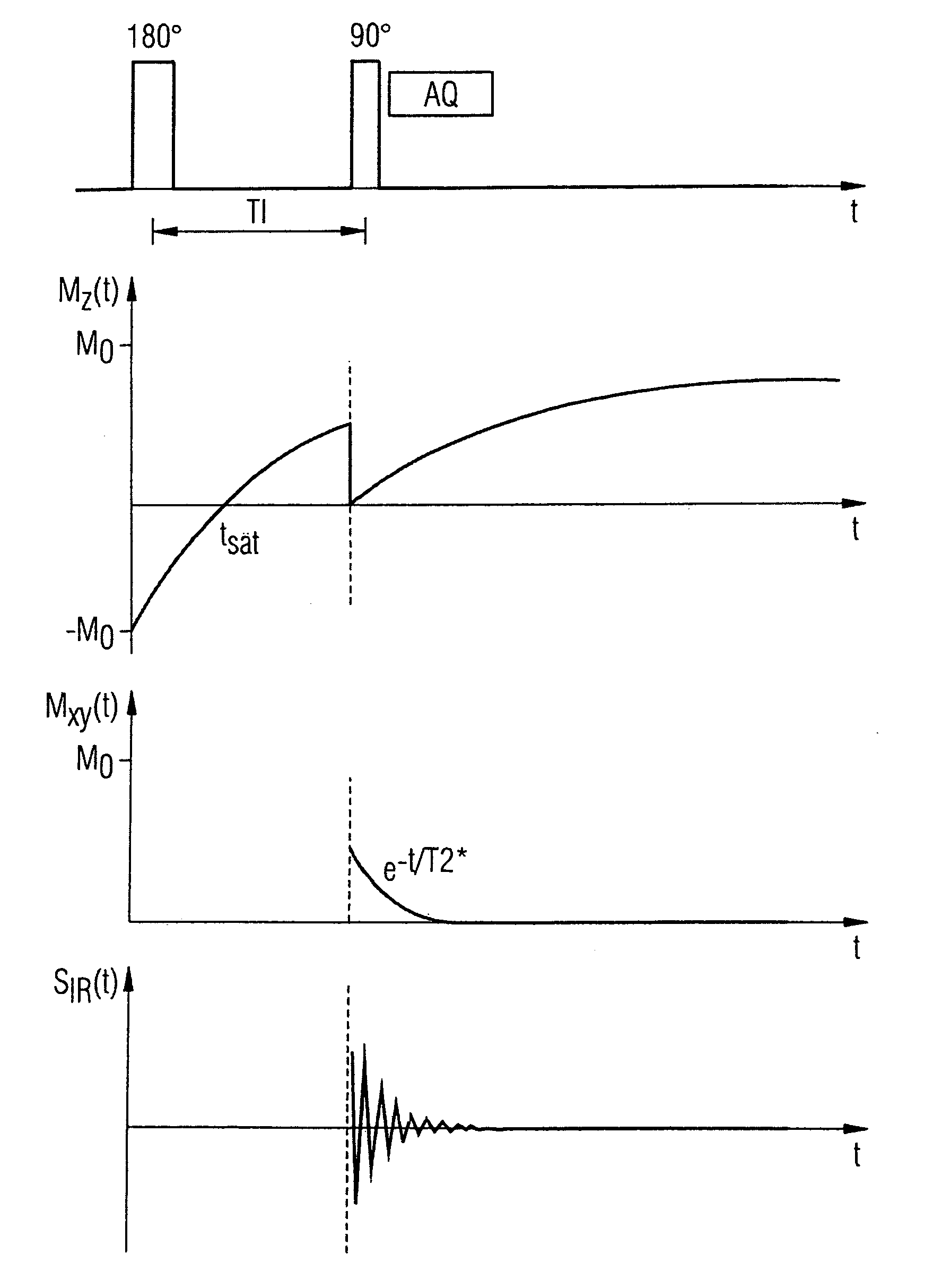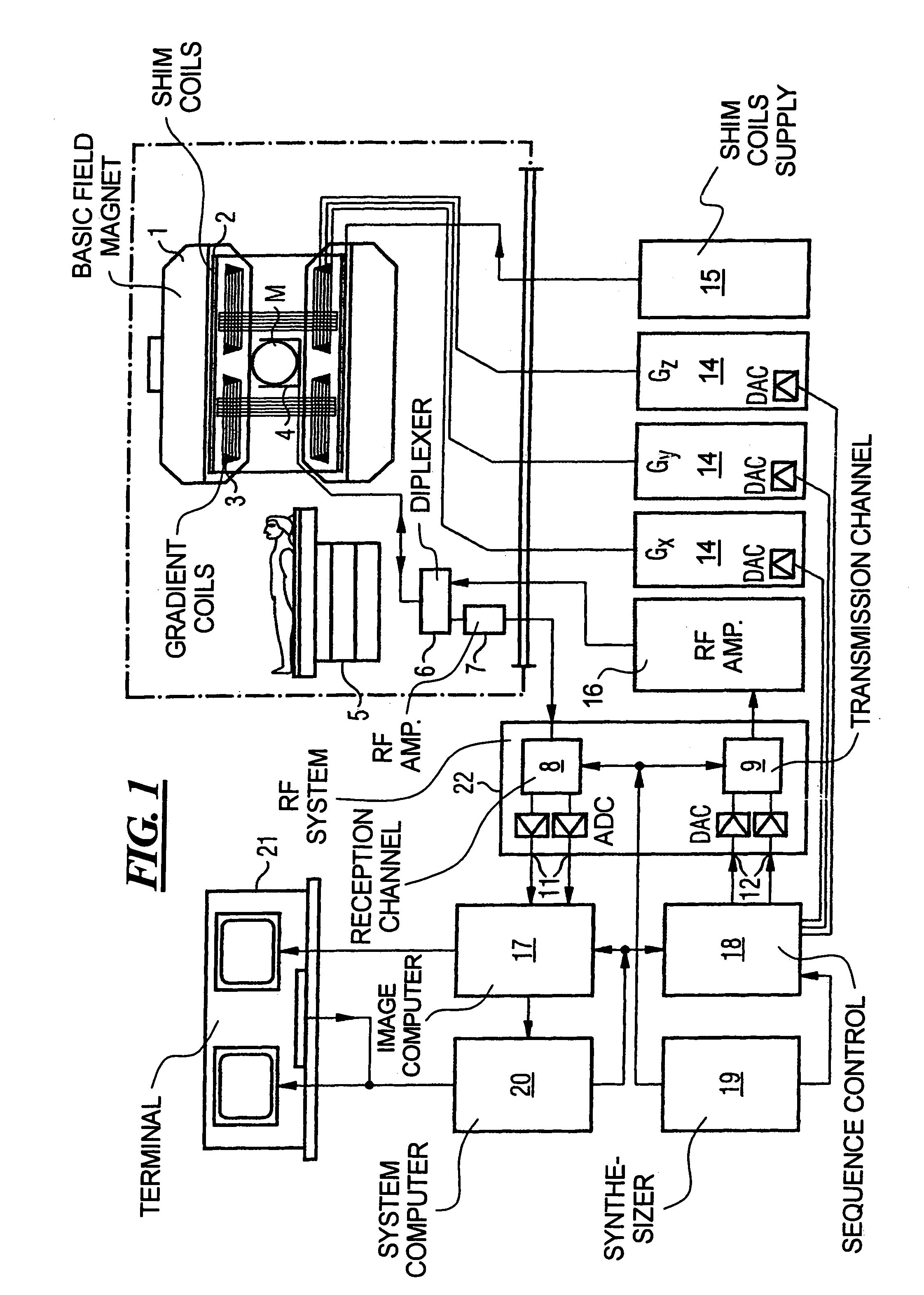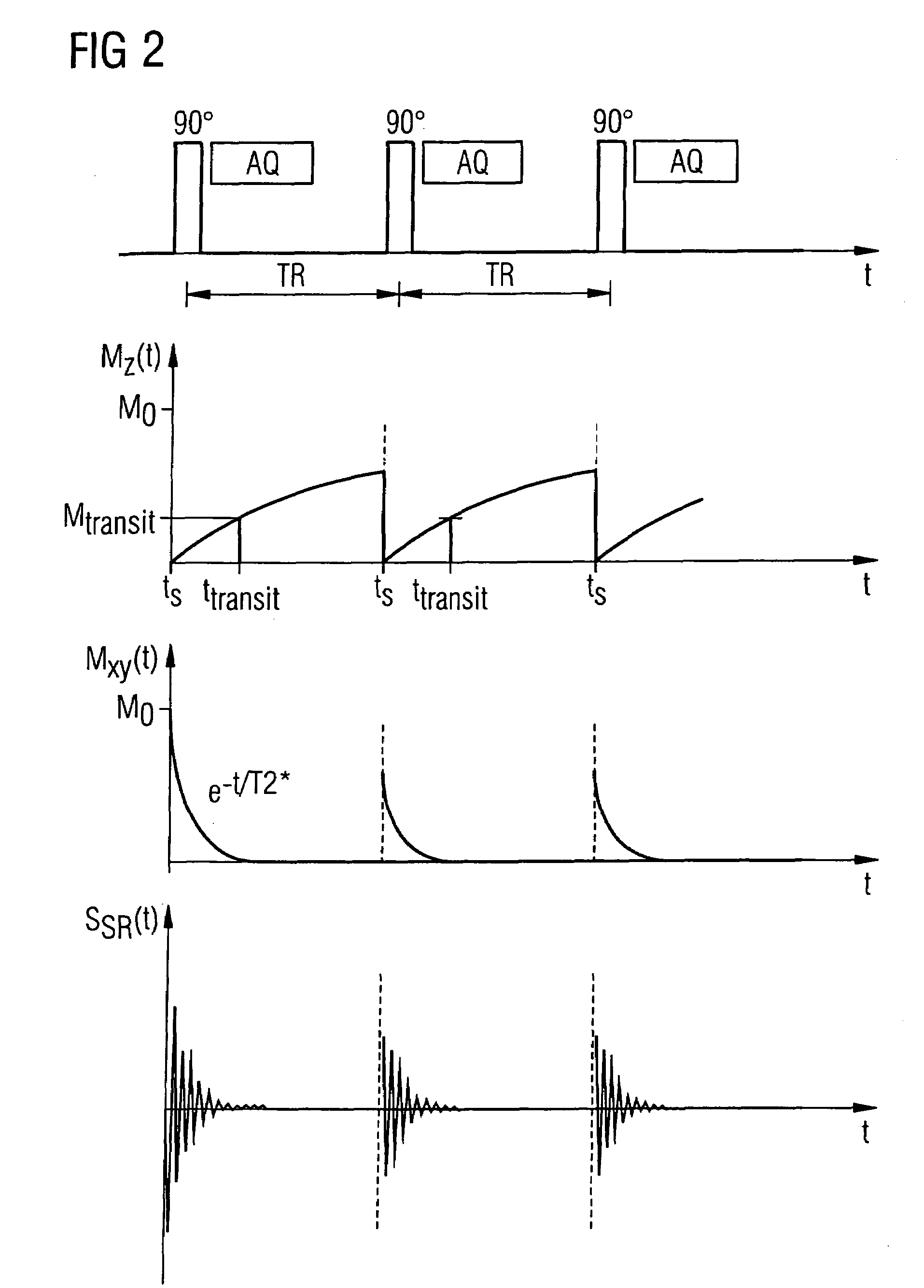Method and apparatus for intervention imaging in magnetic resonance tomography
a magnetic resonance tomography and intervention imaging technology, applied in the field of magnetic resonance tomography, can solve the problems of weakening or obliterating the magnetic resonance signal, difficult to make the already-bright blood in the mrt image even brighter, and limiting the use of contrast agents to significantly expand the limits of native mr imaging, so as to improve the contrast agent-supported interventional imaging
- Summary
- Abstract
- Description
- Claims
- Application Information
AI Technical Summary
Benefits of technology
Problems solved by technology
Method used
Image
Examples
Embodiment Construction
[0031]FIG. 1 is a block diagram of a magnetic resonance tomography apparatus with which an interventional imaging is possible according to the present invention. The component of the magnetic resonance tomography apparatus correspond to the design of a conventional tomography apparatus with the exceptions described below. A basic field magnet 1 generates a temporally constant strong magnetic field for polarization or alignment of the nuclear spins in the examination region of a subject such as, for example, of a part of a human body to be examined. The high homogeneity of the basic magnetic field necessary for the magnetic resonance scan is defined in a spherical measurement volume M in which the parts of the human body to be examined are introduced. To satisfy the homogeneity requirements, and in particular for elimination of temporally non-varying influences, what are known as shim plates made from ferromagnetic material are mounted at a suitable location. Temporally variable infl...
PUM
 Login to View More
Login to View More Abstract
Description
Claims
Application Information
 Login to View More
Login to View More - R&D
- Intellectual Property
- Life Sciences
- Materials
- Tech Scout
- Unparalleled Data Quality
- Higher Quality Content
- 60% Fewer Hallucinations
Browse by: Latest US Patents, China's latest patents, Technical Efficacy Thesaurus, Application Domain, Technology Topic, Popular Technical Reports.
© 2025 PatSnap. All rights reserved.Legal|Privacy policy|Modern Slavery Act Transparency Statement|Sitemap|About US| Contact US: help@patsnap.com



